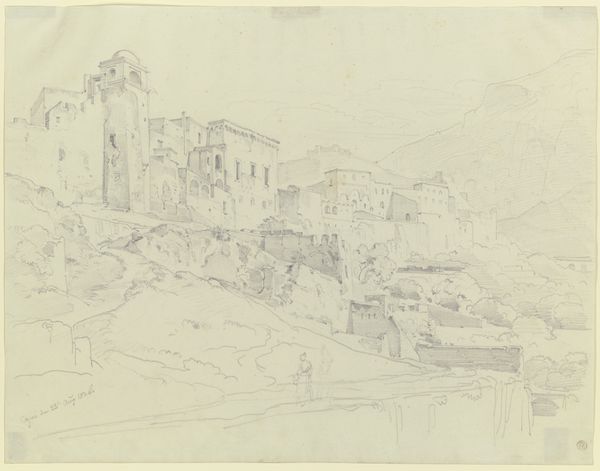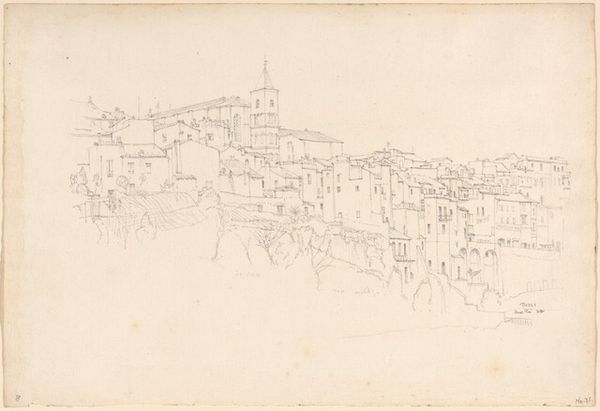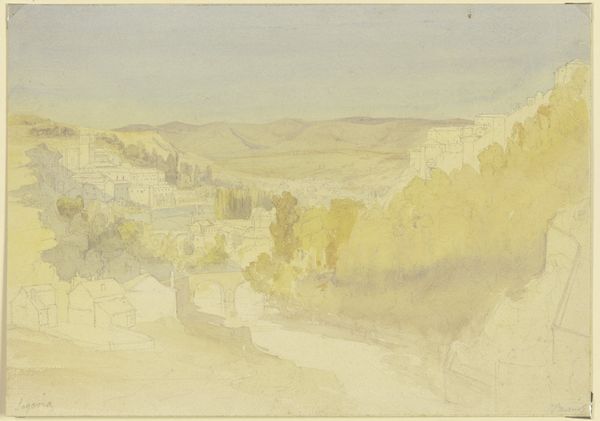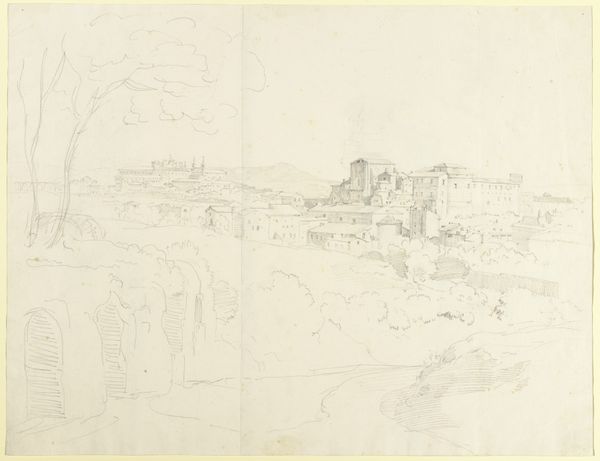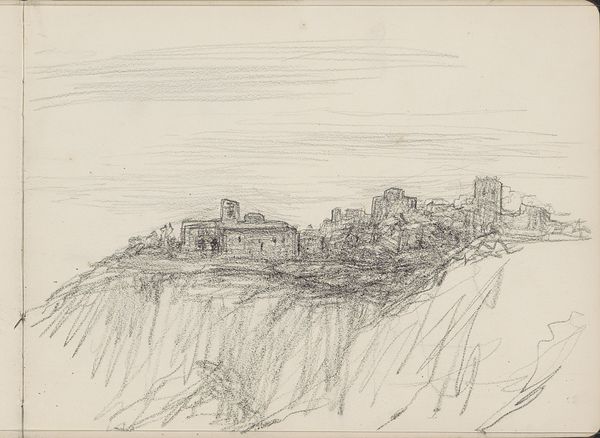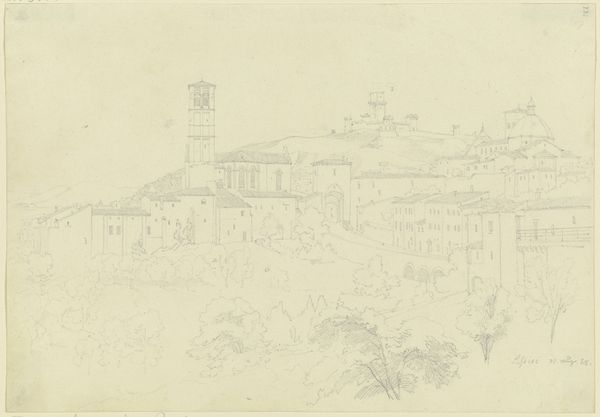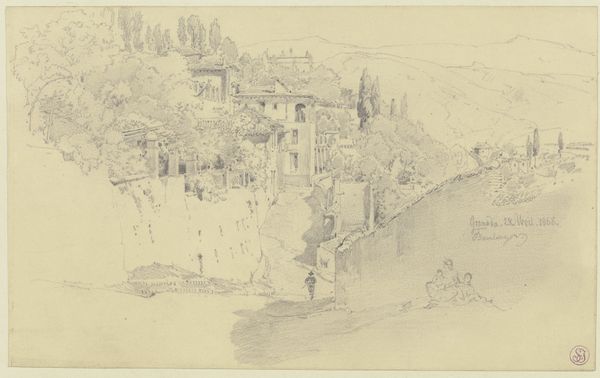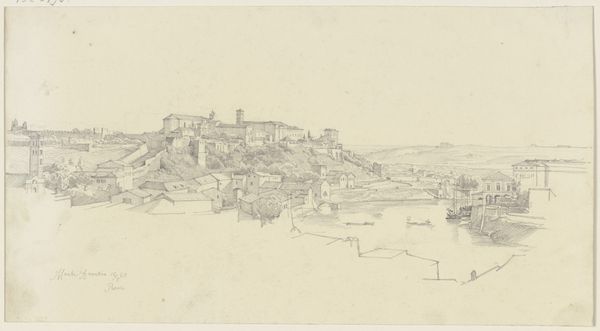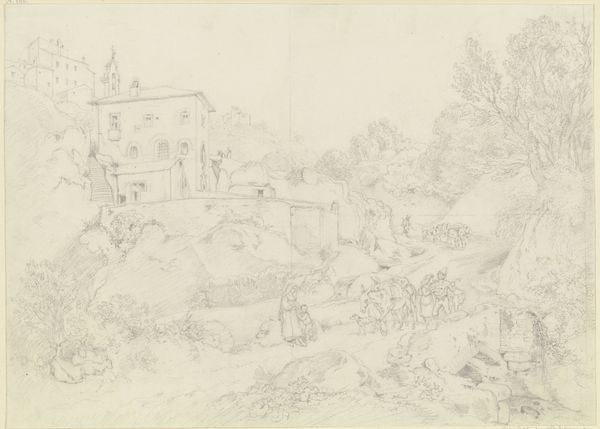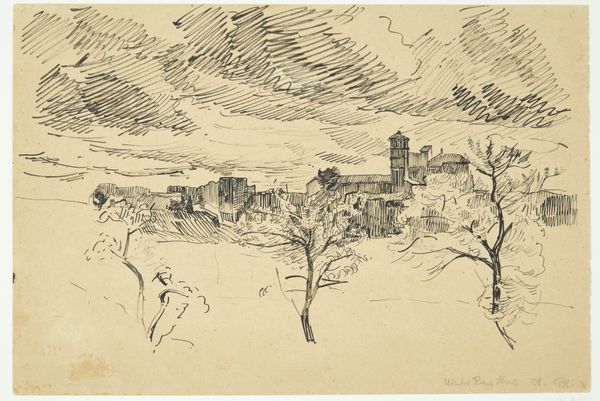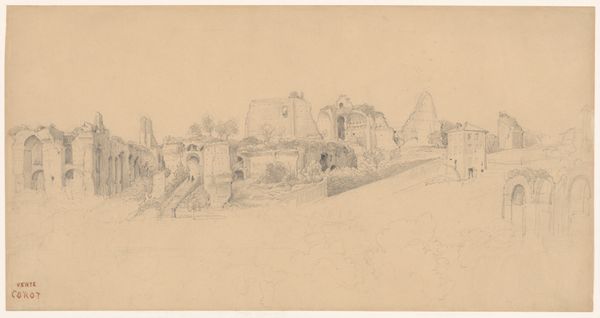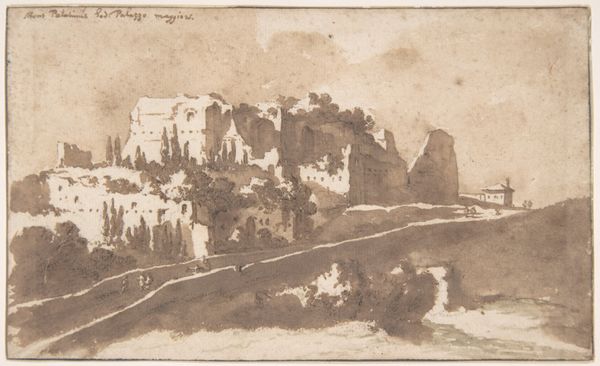
Dimensions: sheet: 29.9 x 36.6 cm (11 3/4 x 14 7/16 in.)
Copyright: National Gallery of Art: CC0 1.0
August Christian Geist made this drawing of Ariccia from across a valley using graphite and watercolor on paper in 1866. The paper itself has aged to a warm tan, which mutes the cooler tones of the graphite and watercolor. The visible strokes and layered washes give the impression of an artist working quickly, capturing the scene en plein air. You can see the marks of his creative decisions – erasures, blended areas, and the barest suggestion of forms, like the vegetation in the foreground. It's interesting to consider the making of this drawing within its historical context. In the mid-19th century, travel to picturesque locations like Ariccia was becoming increasingly accessible to artists and tourists alike. This fueled a market for such landscape drawings, which were relatively quick and inexpensive to produce, making art available to a wider audience. So Geist’s choices of materials and techniques were driven by both aesthetic and economic considerations. Looking closely at how this work was made, it challenges conventional ideas about fine art and craft. The drawing is more than just a representation, it’s a record of a particular time and place, and of the artist’s engagement with both.
Comments
No comments
Be the first to comment and join the conversation on the ultimate creative platform.
